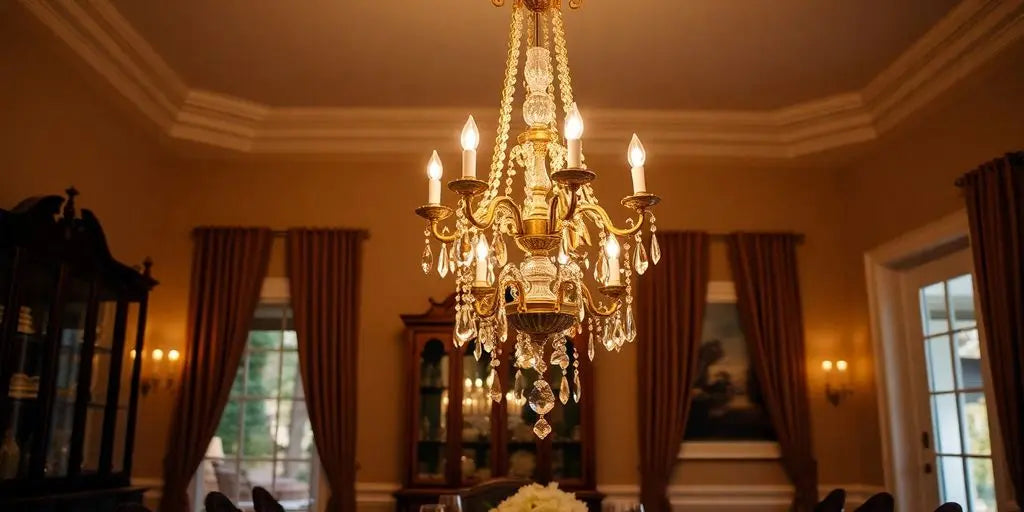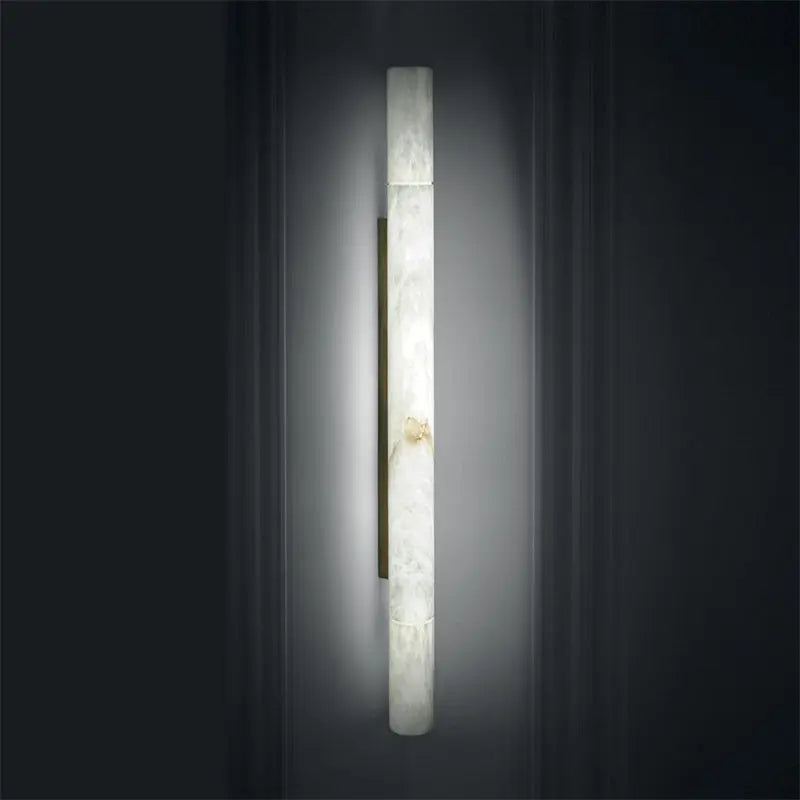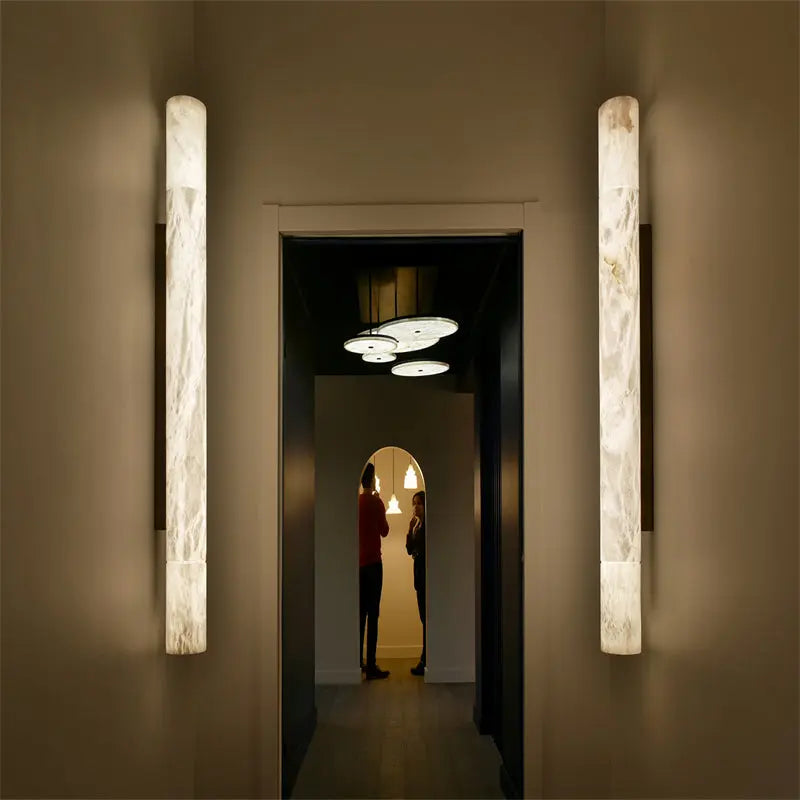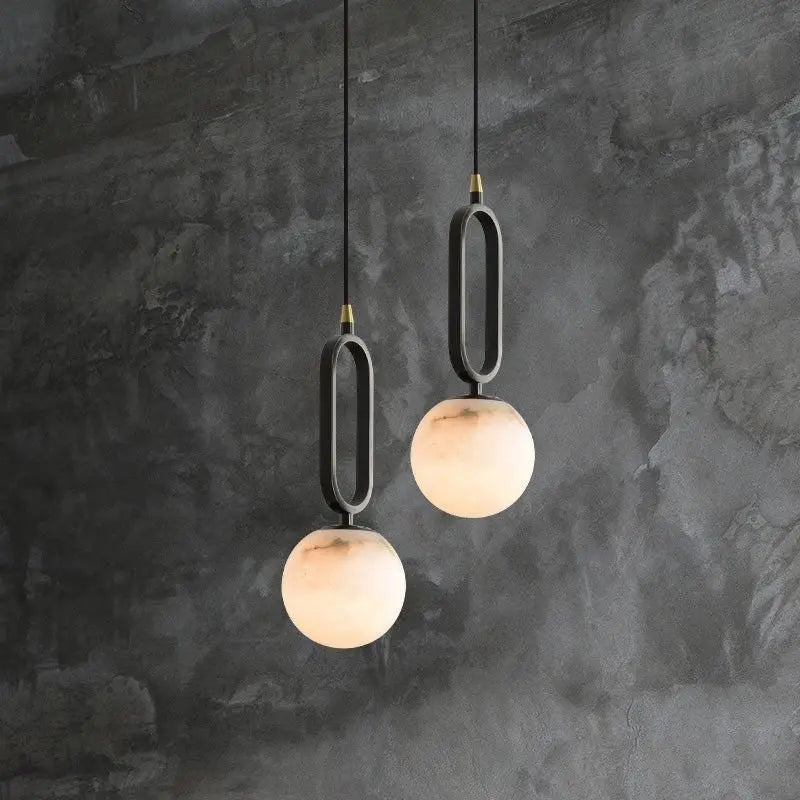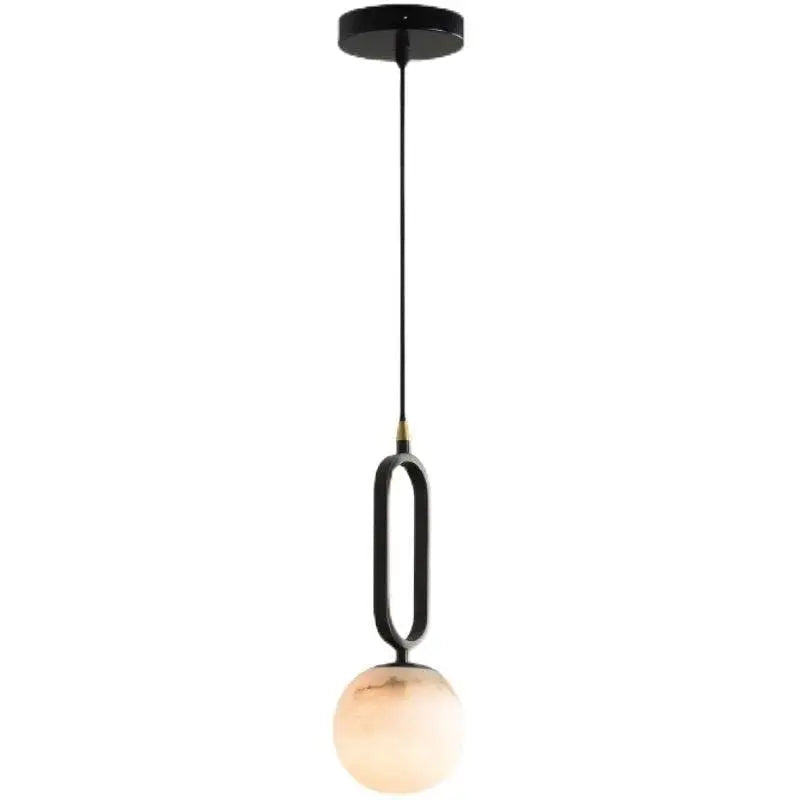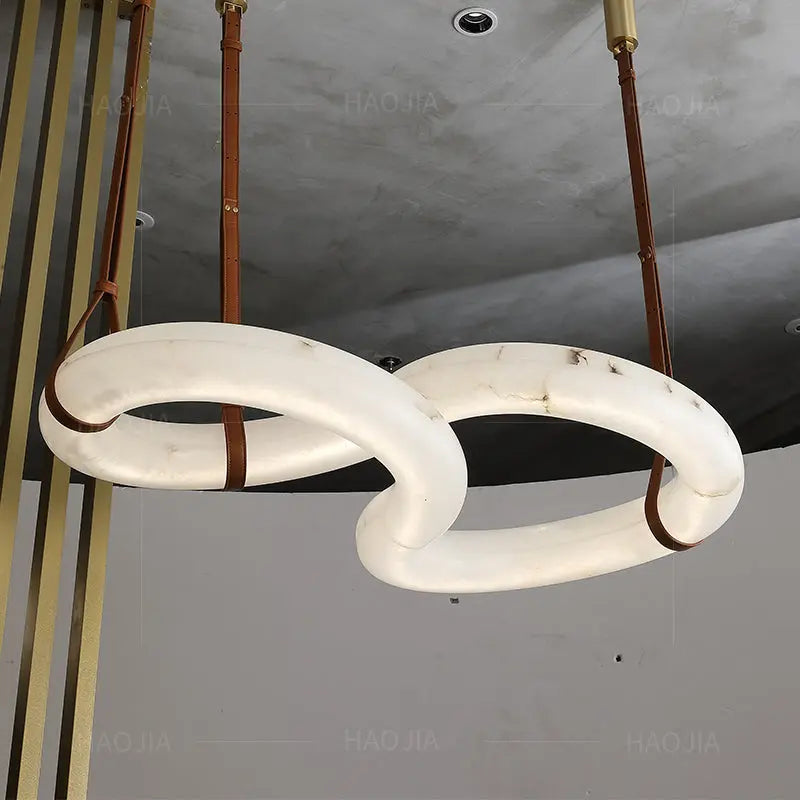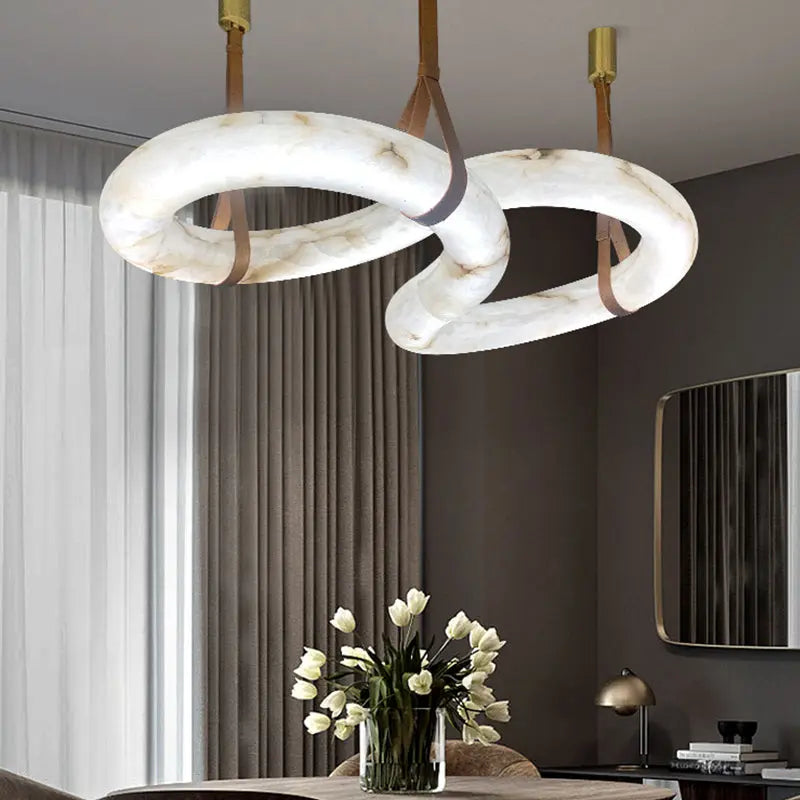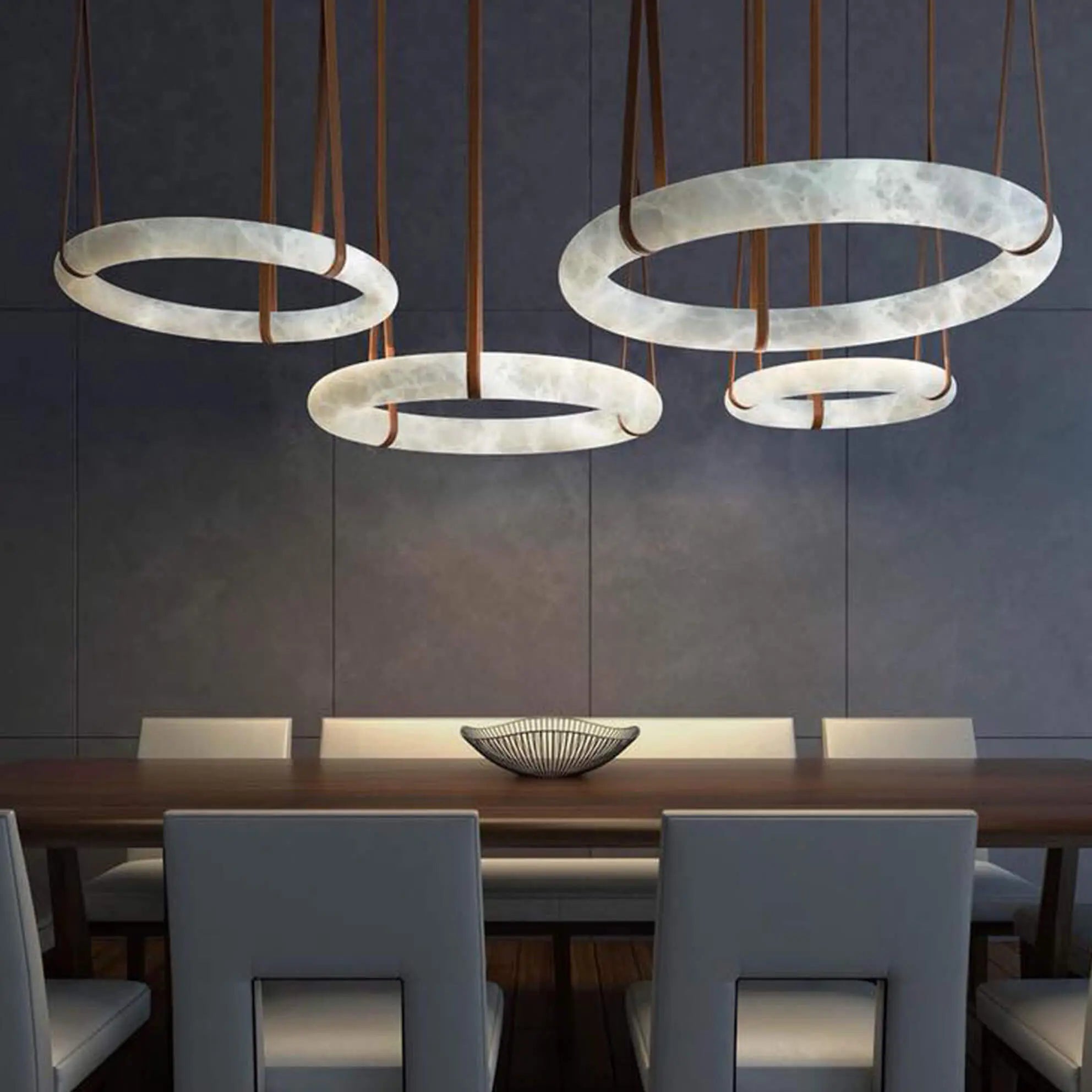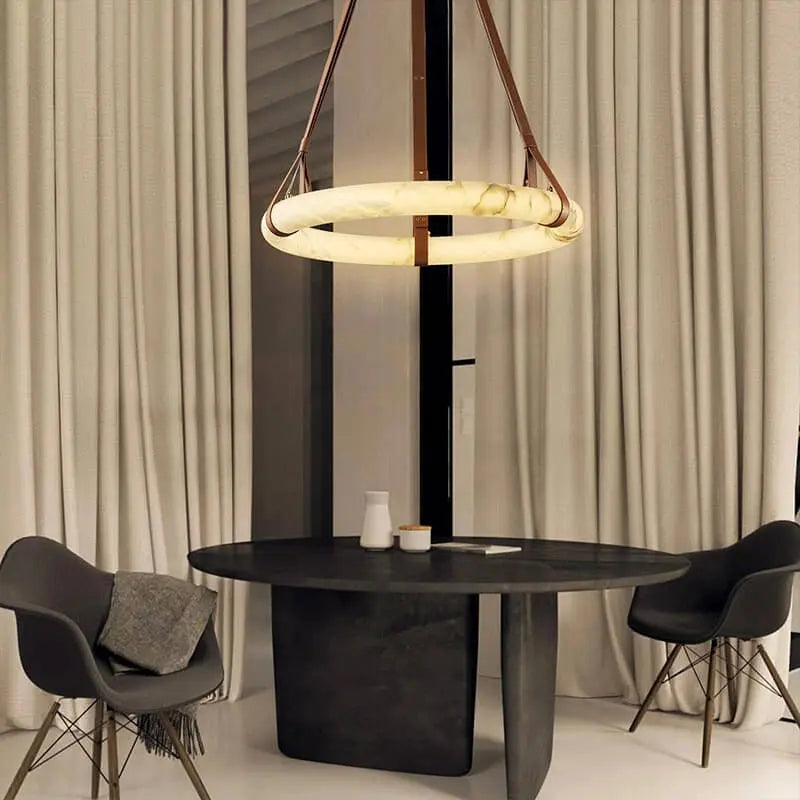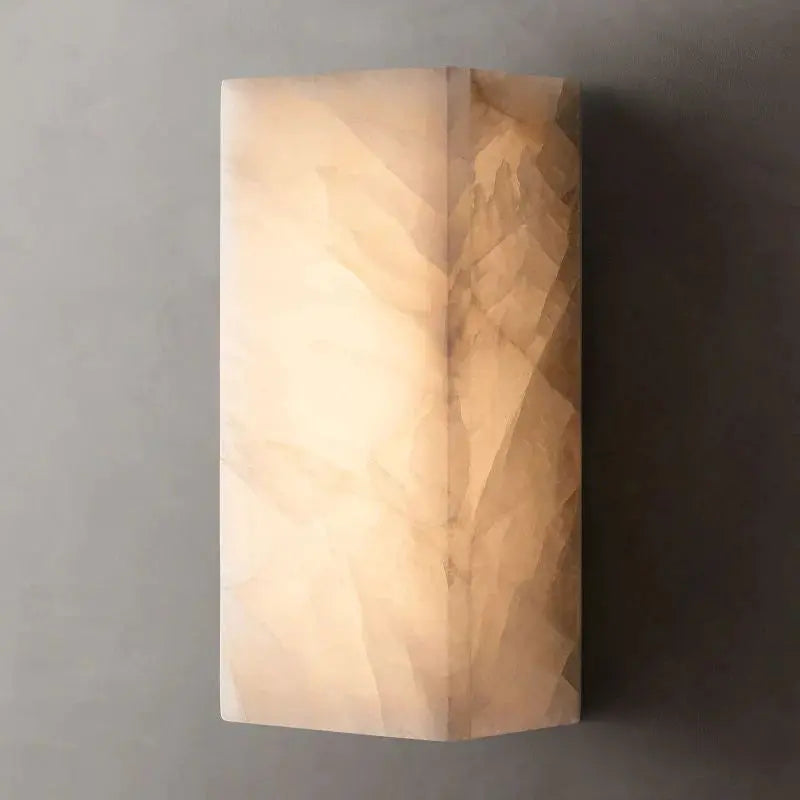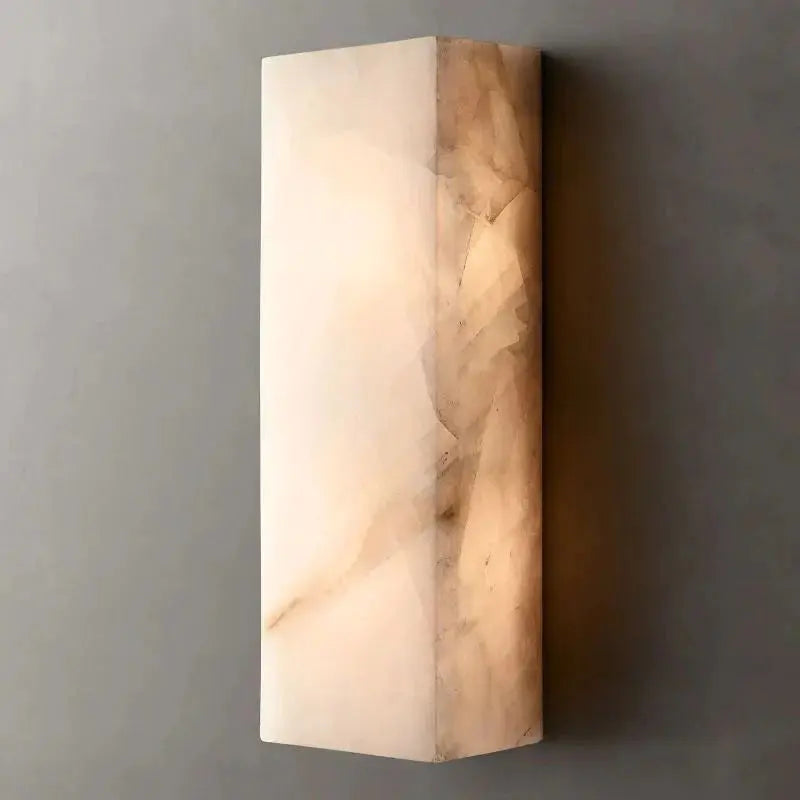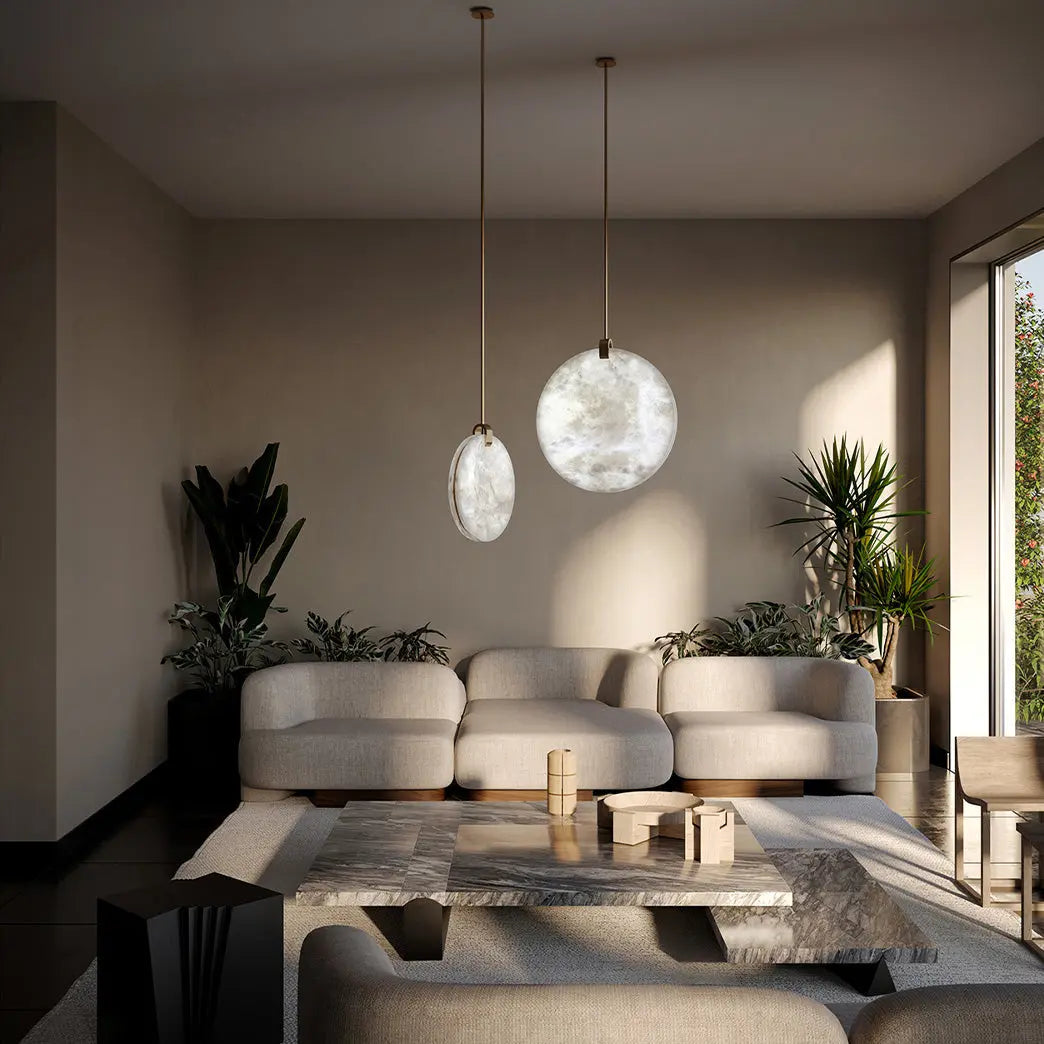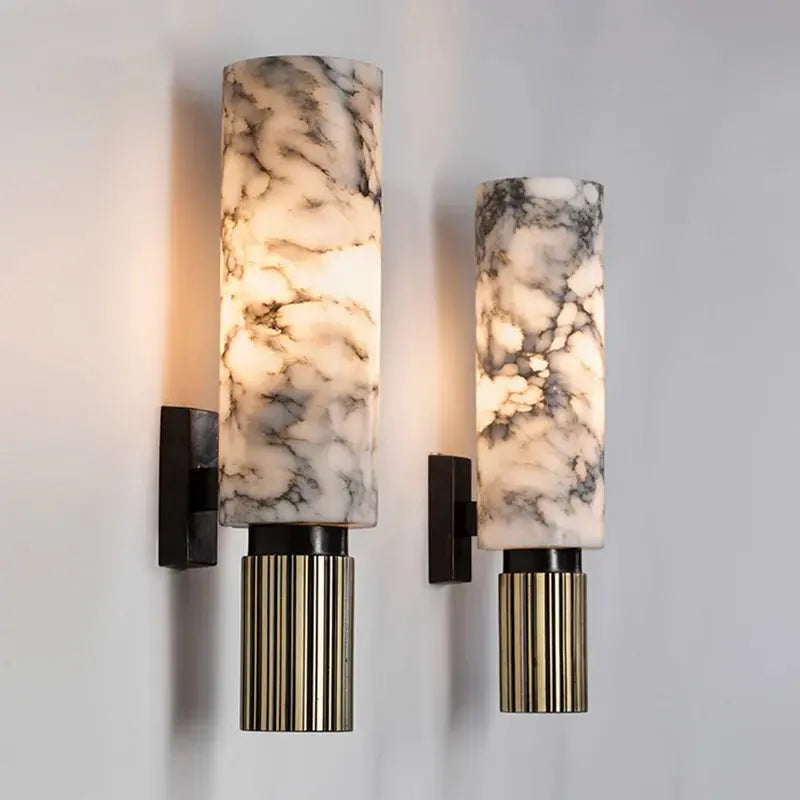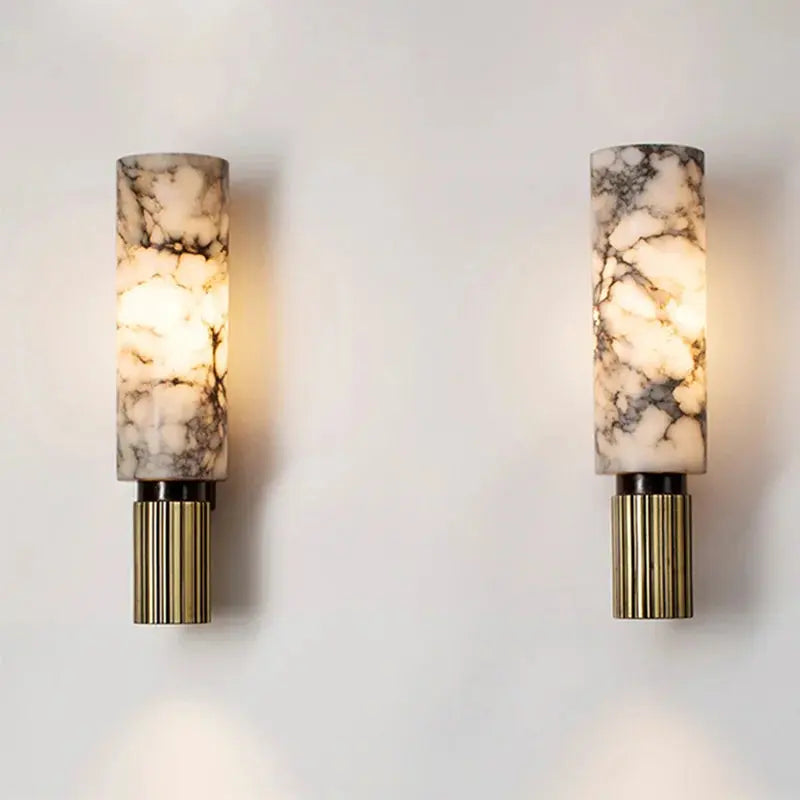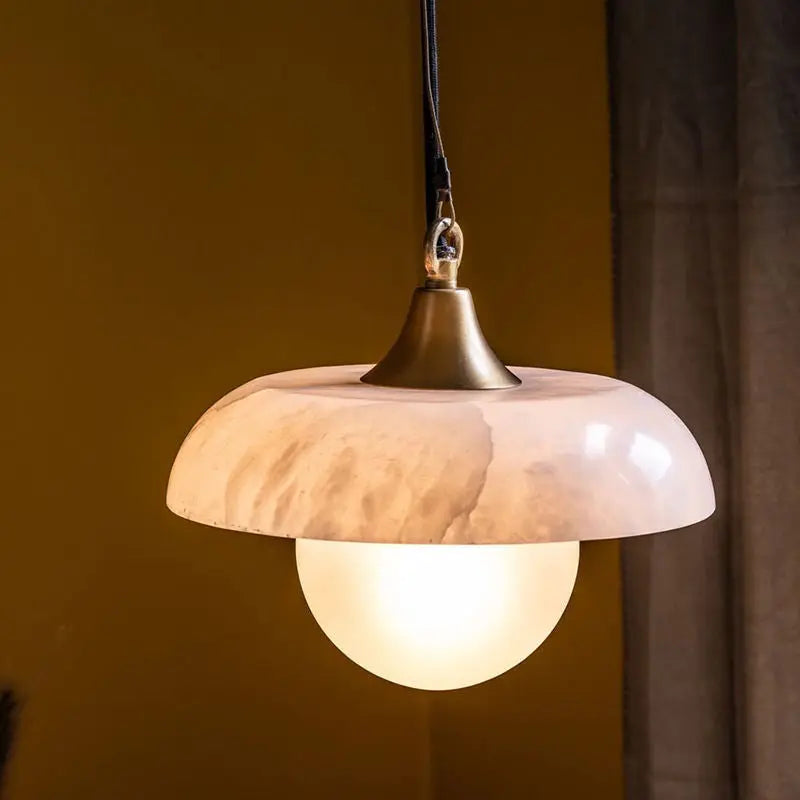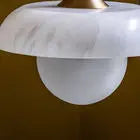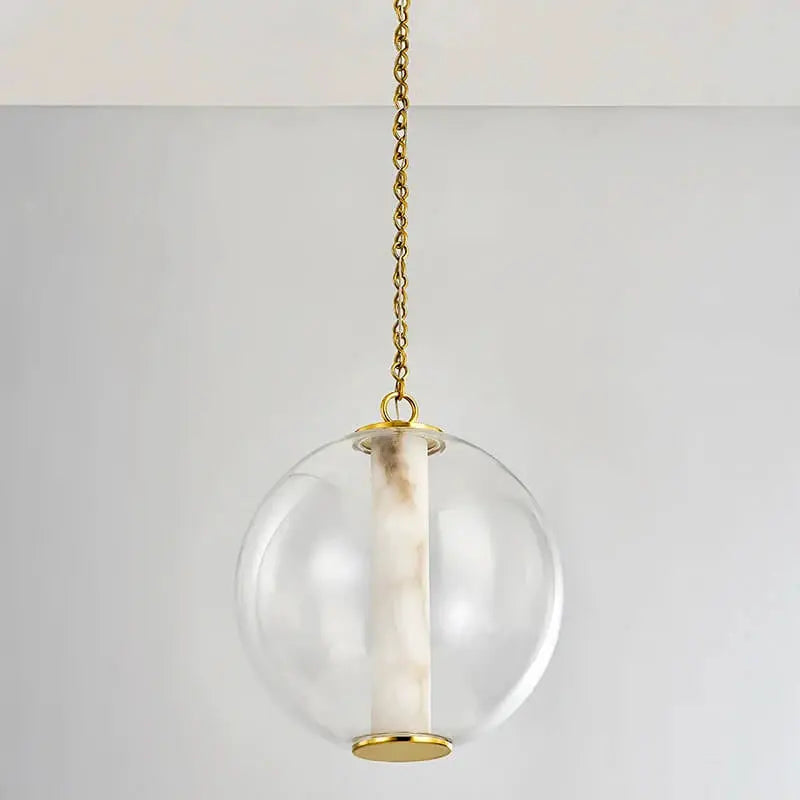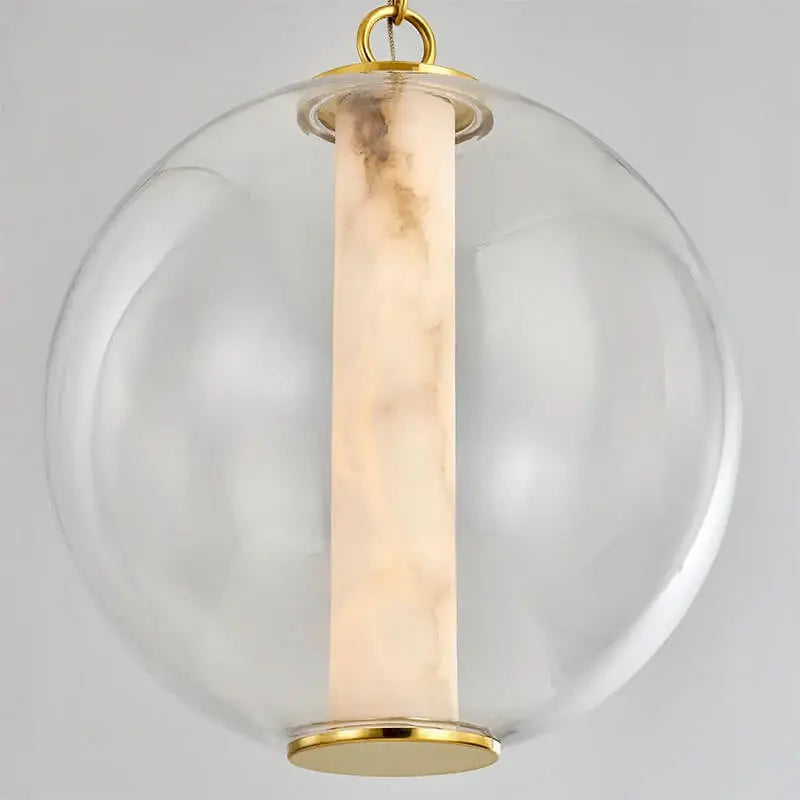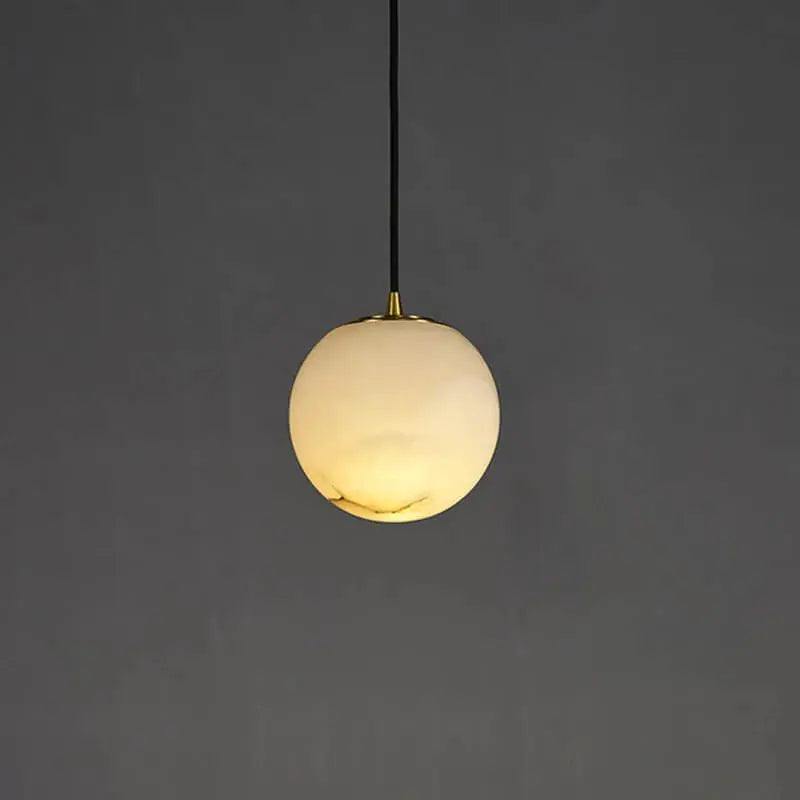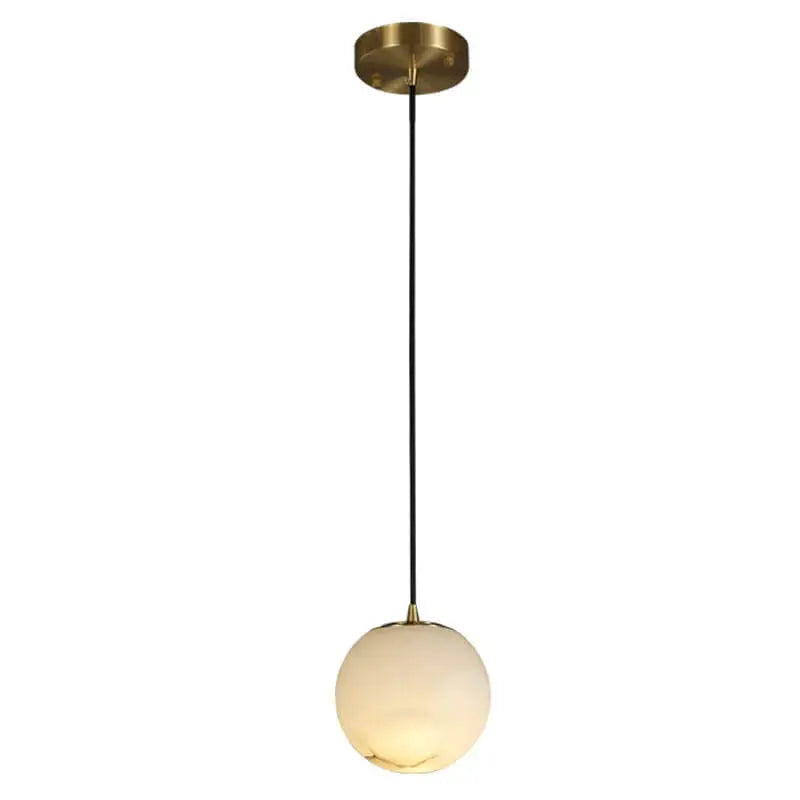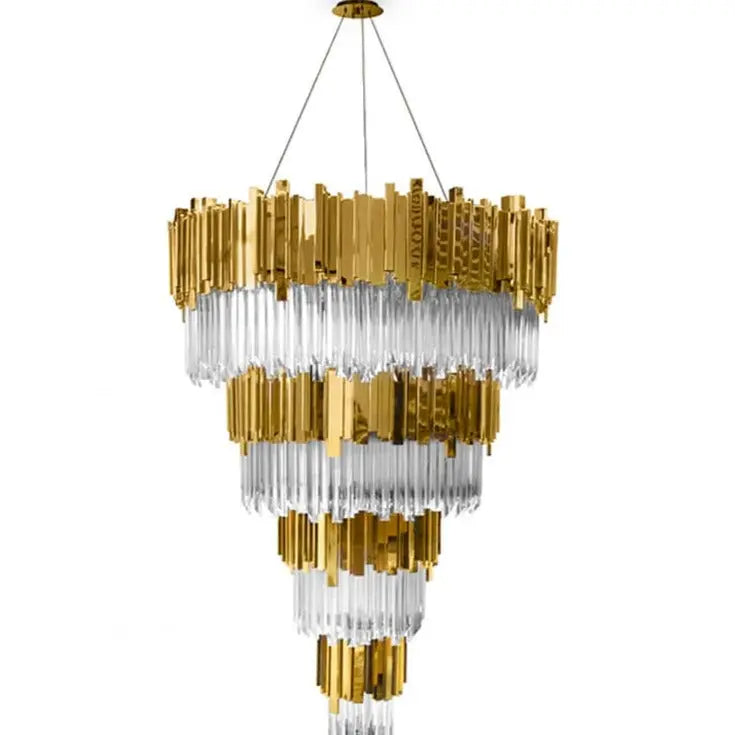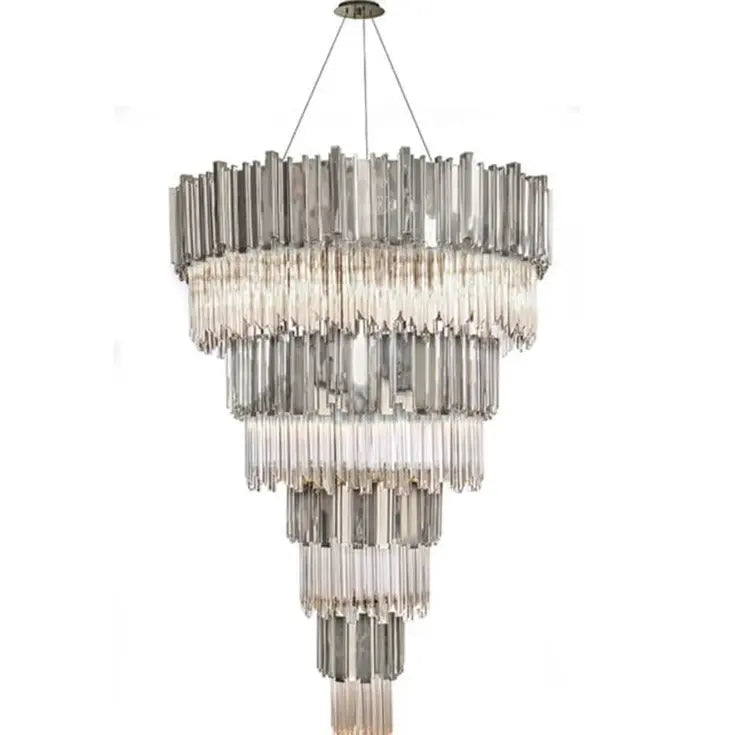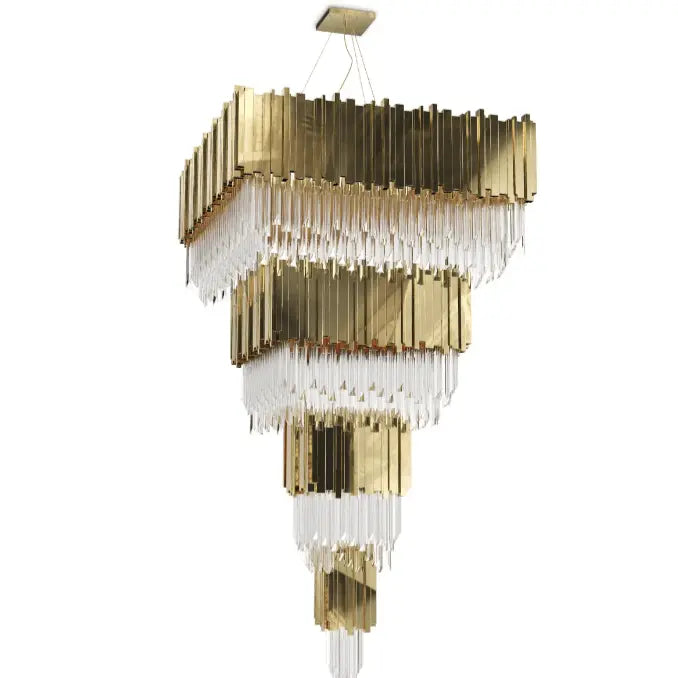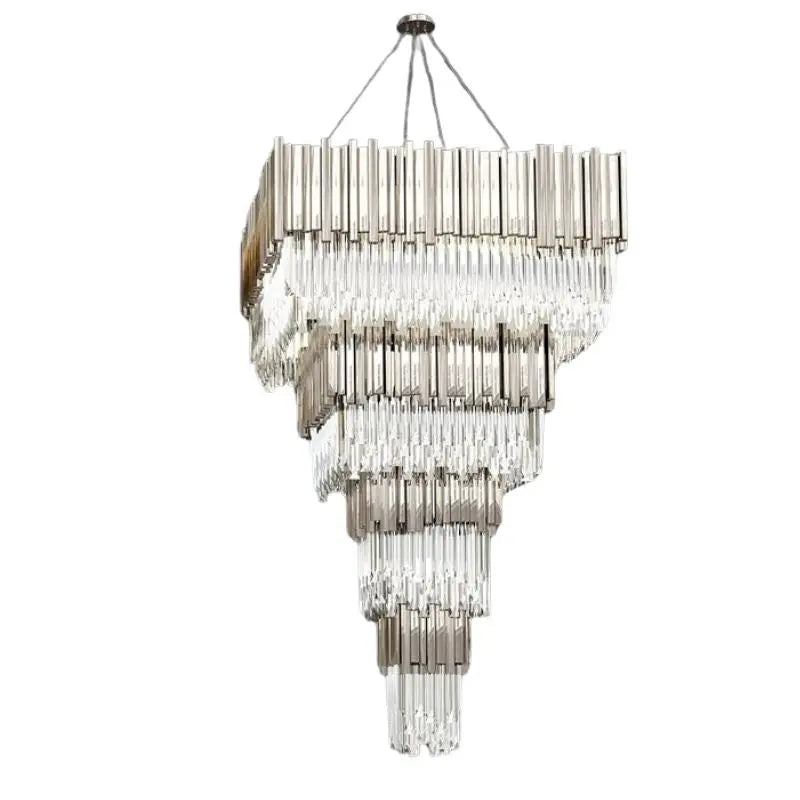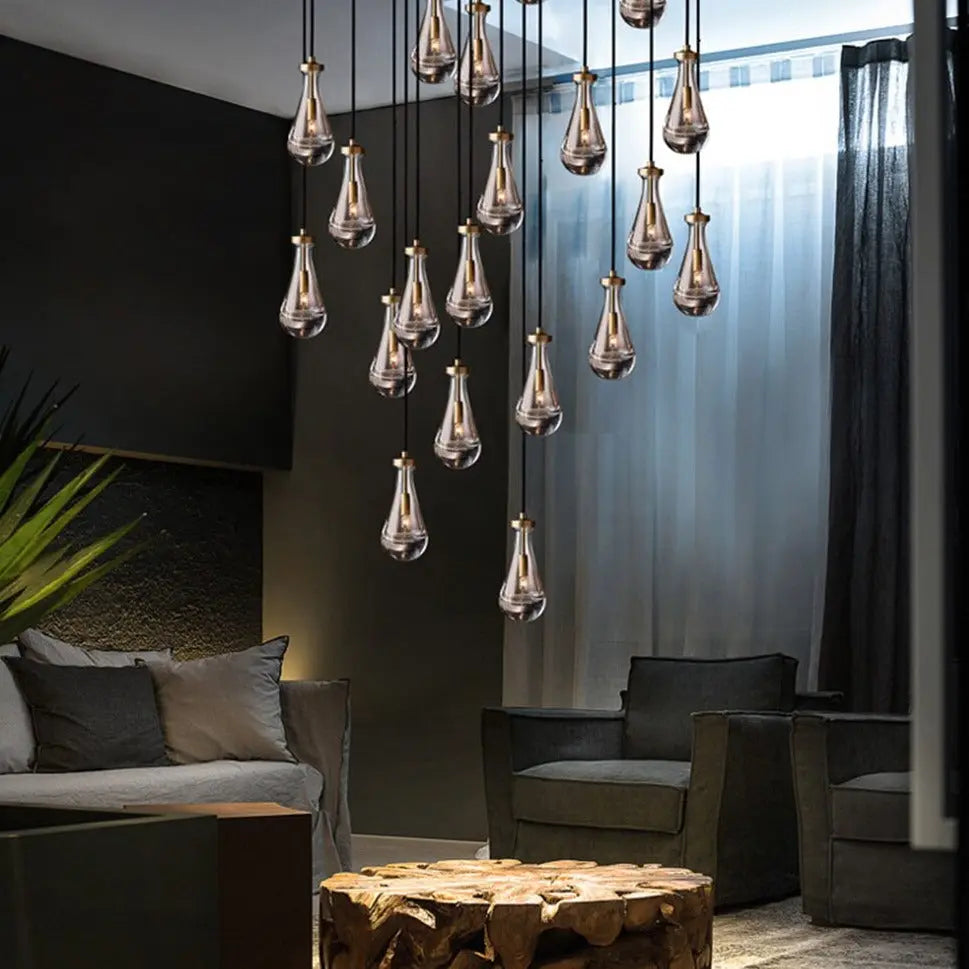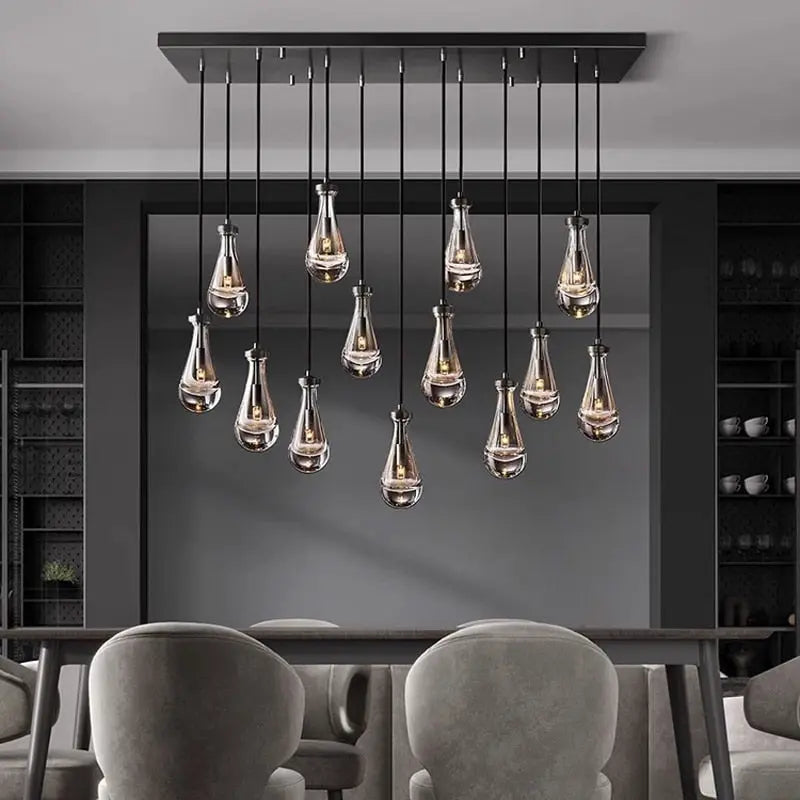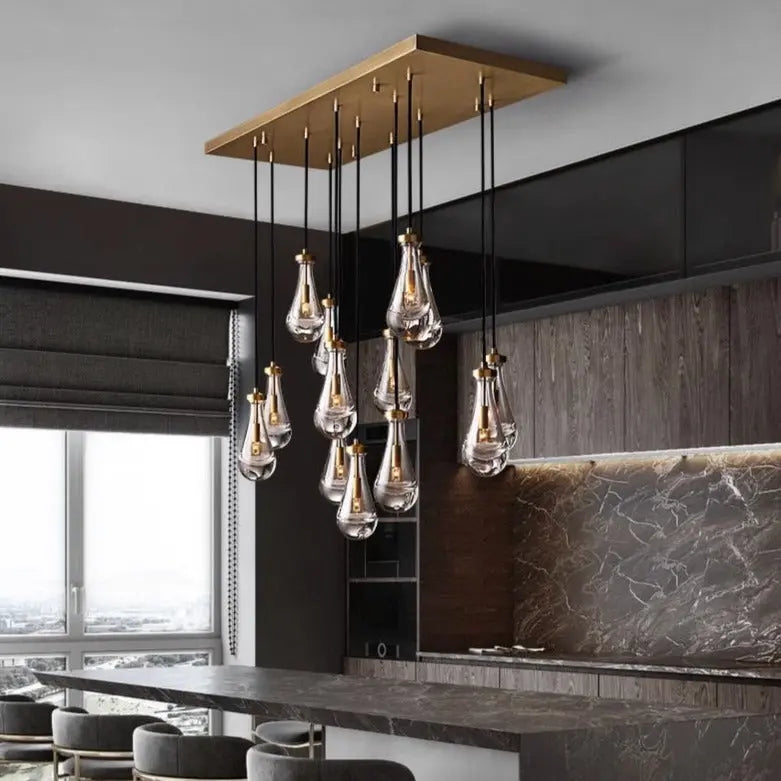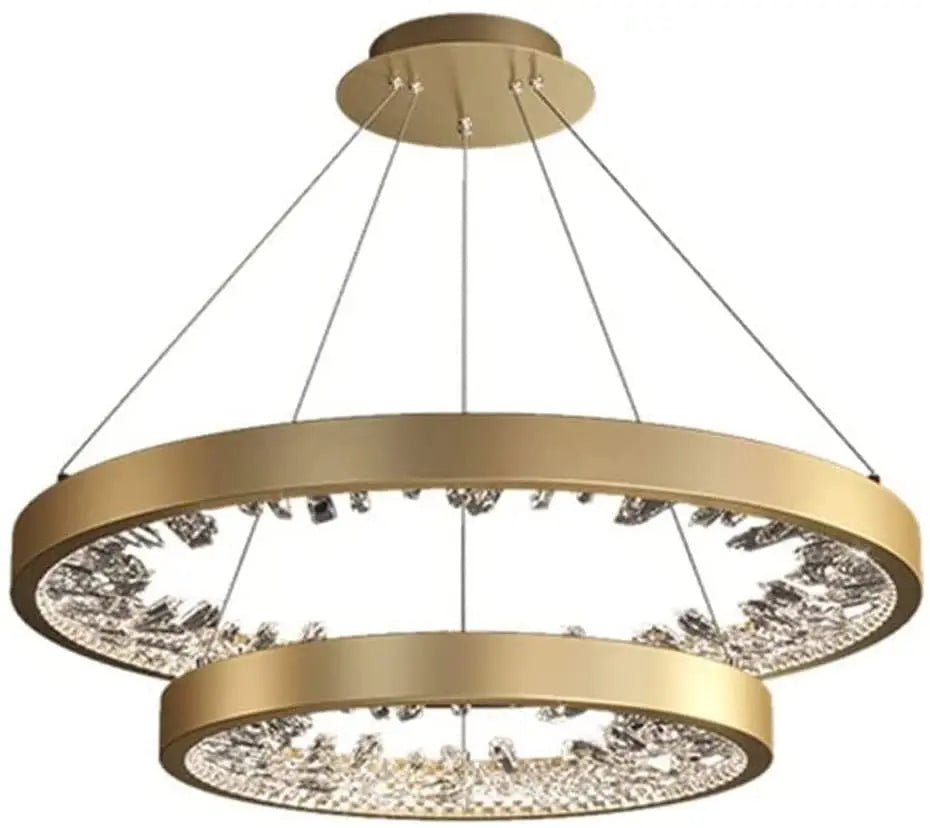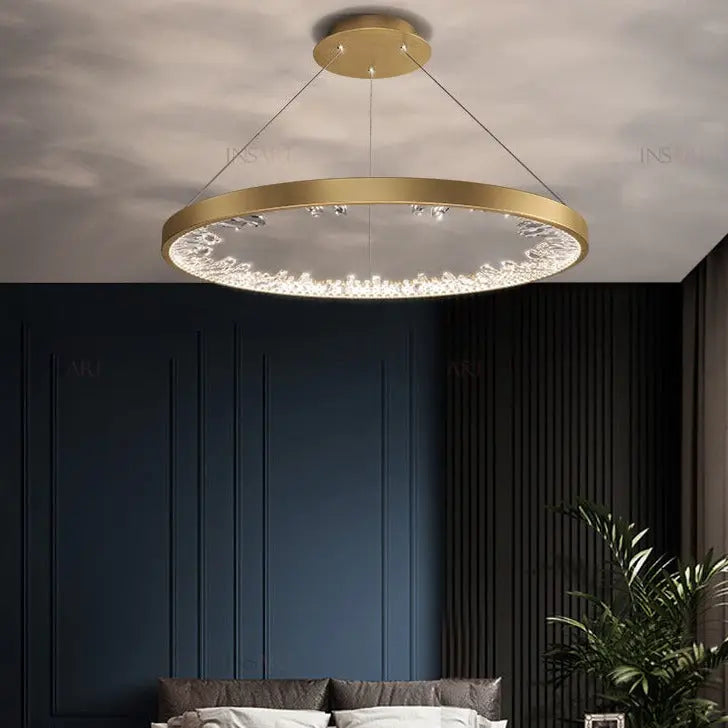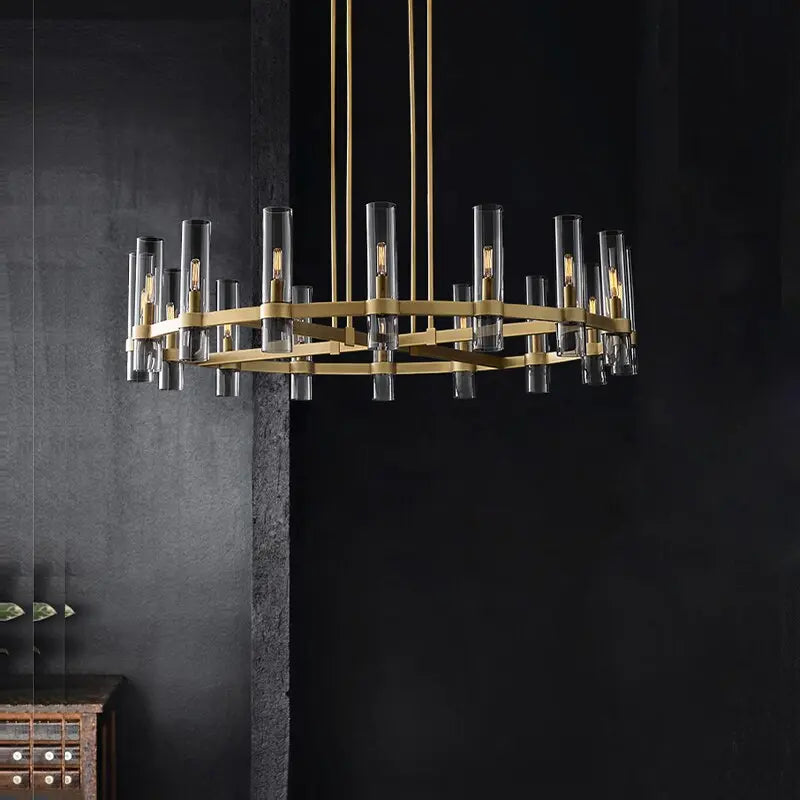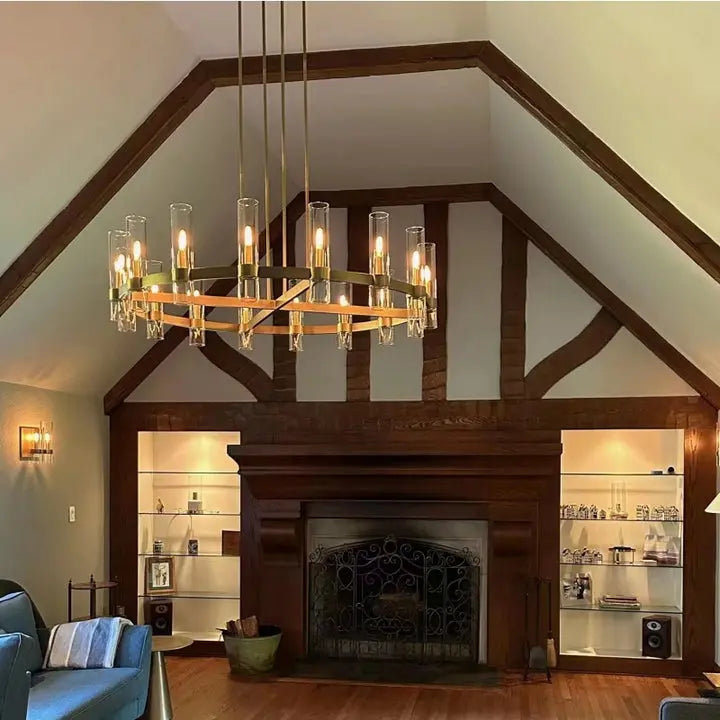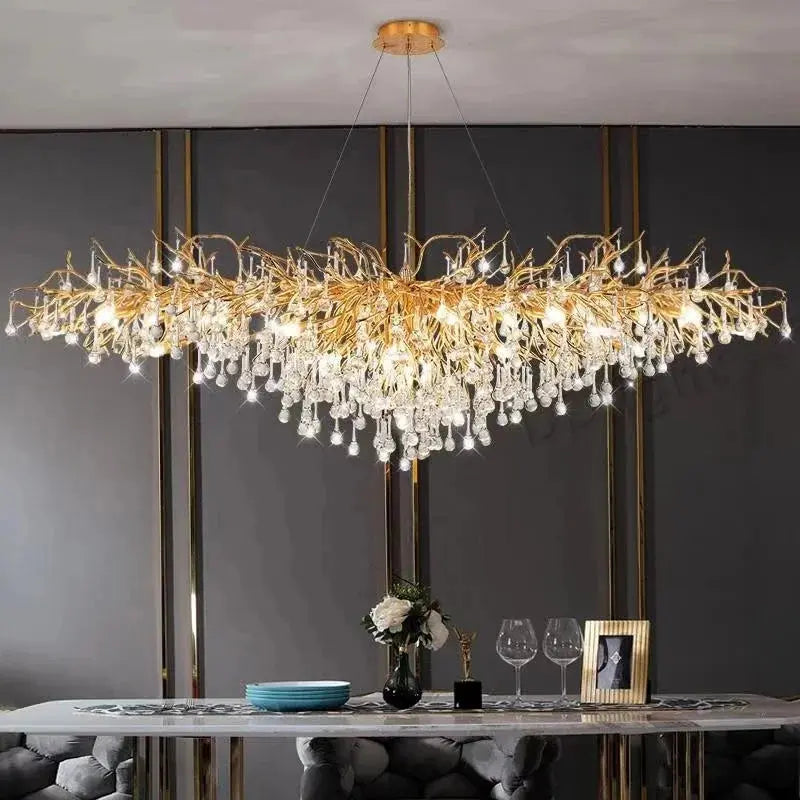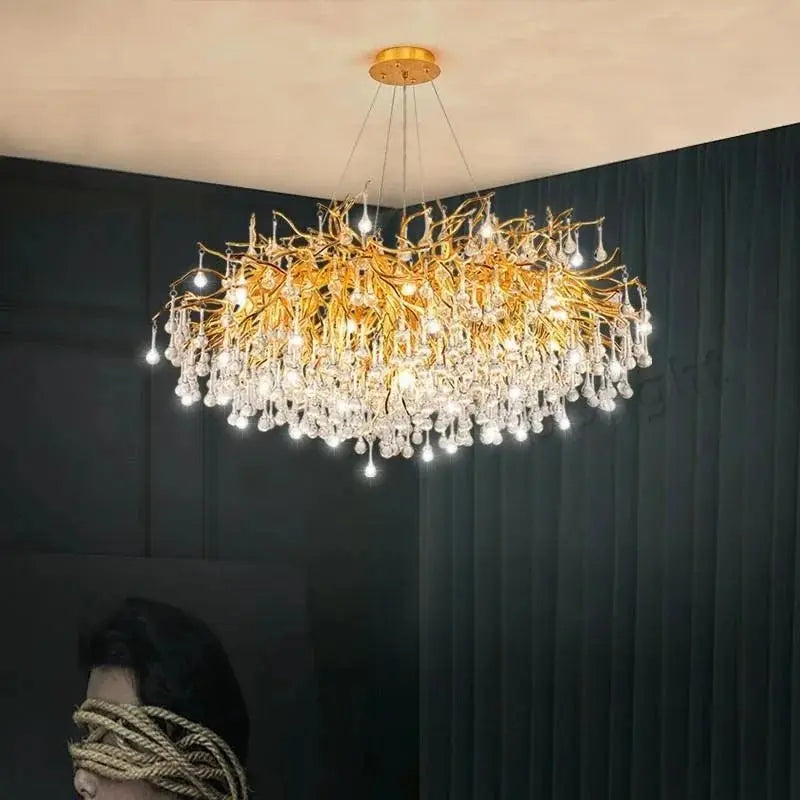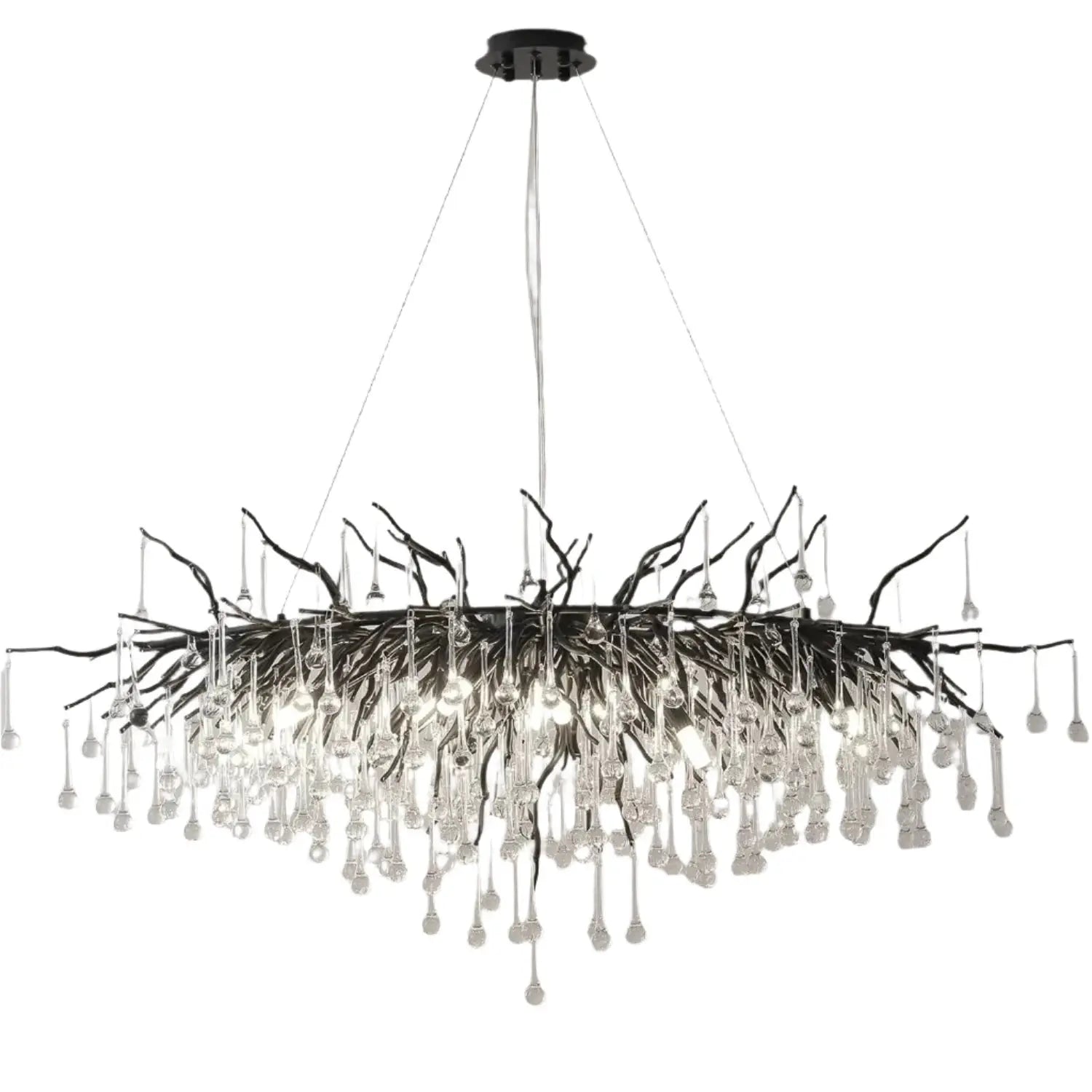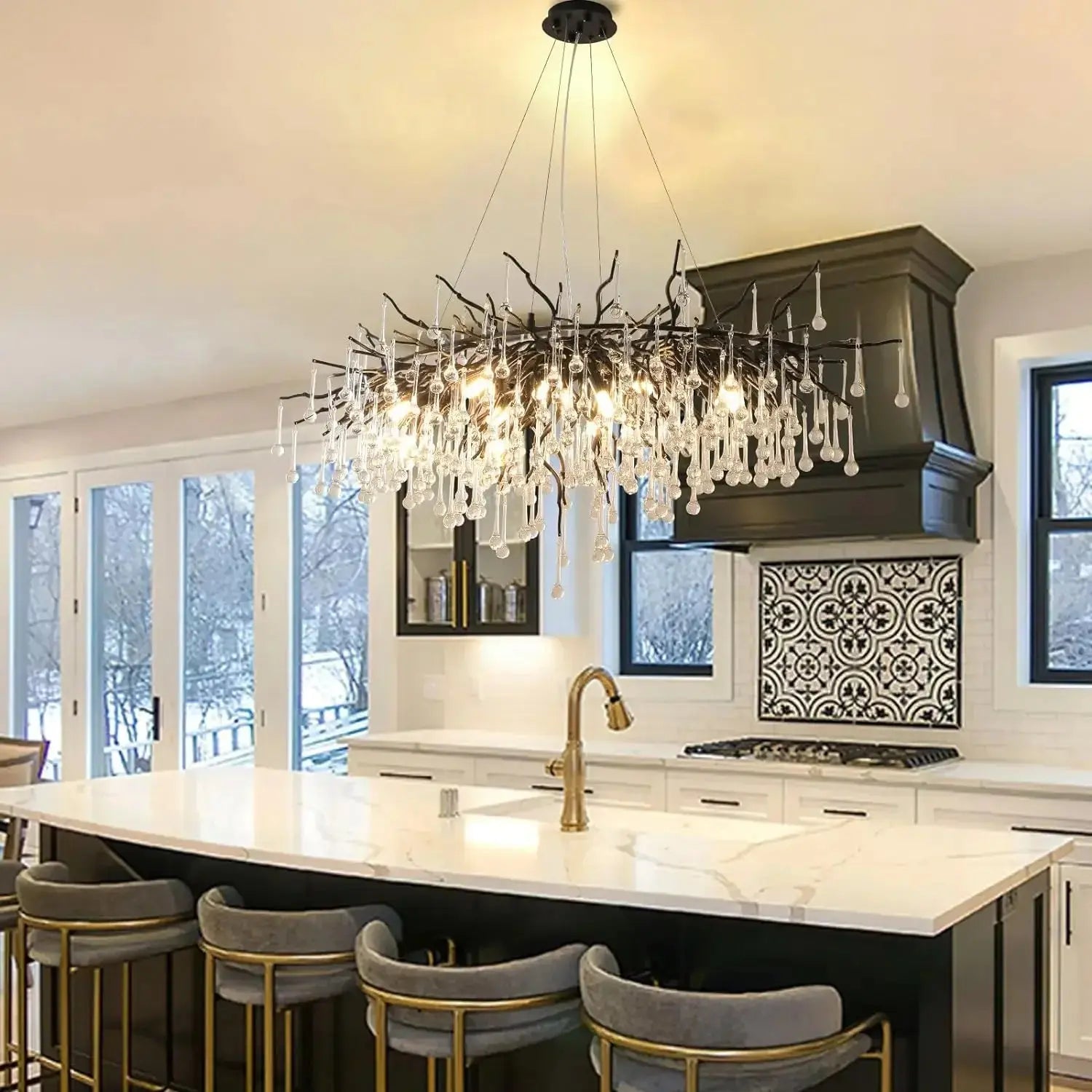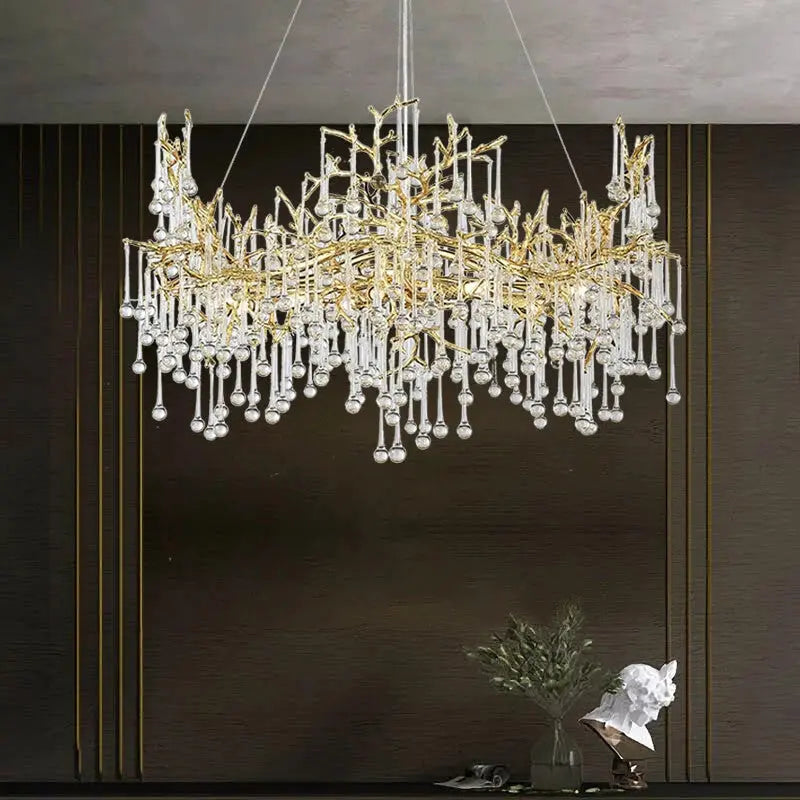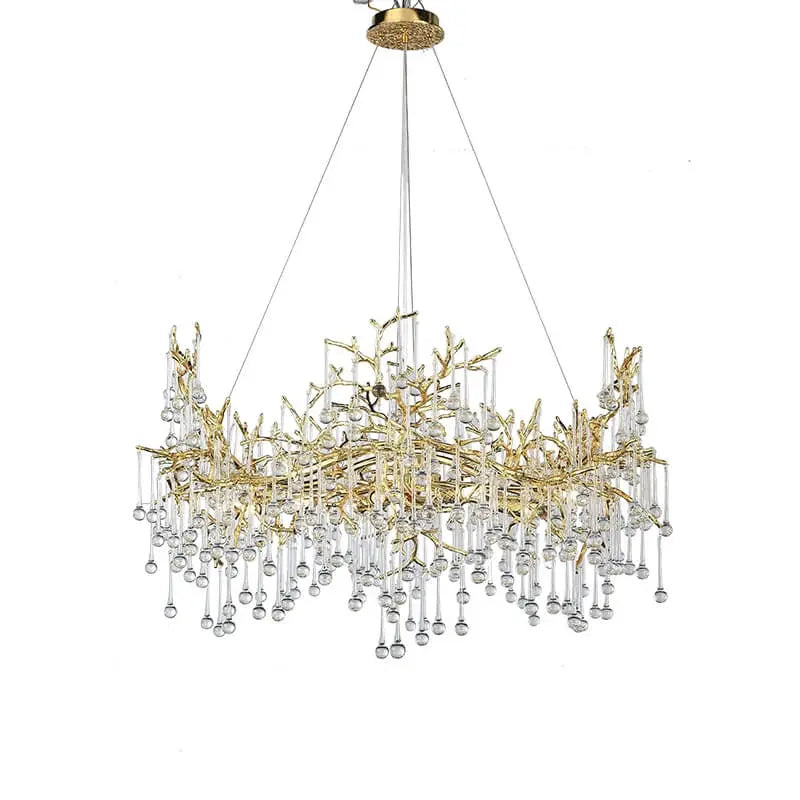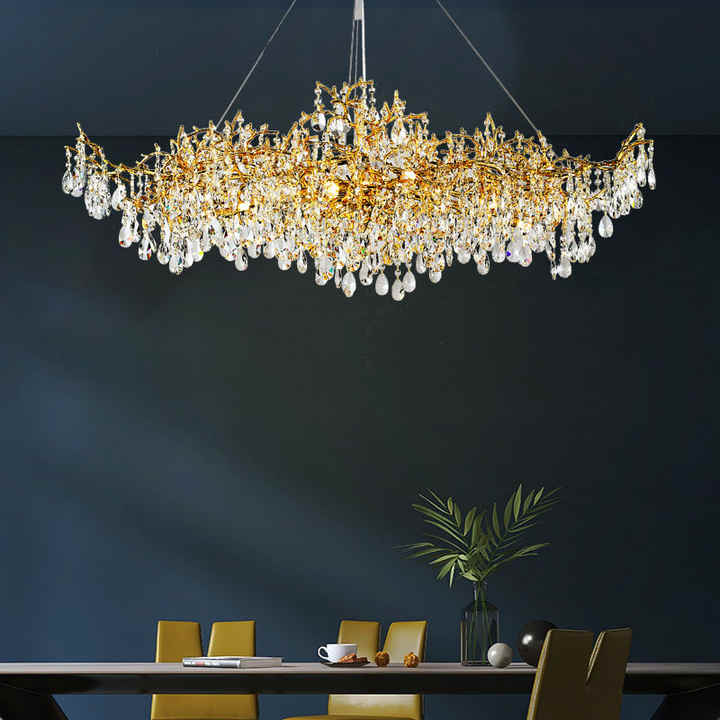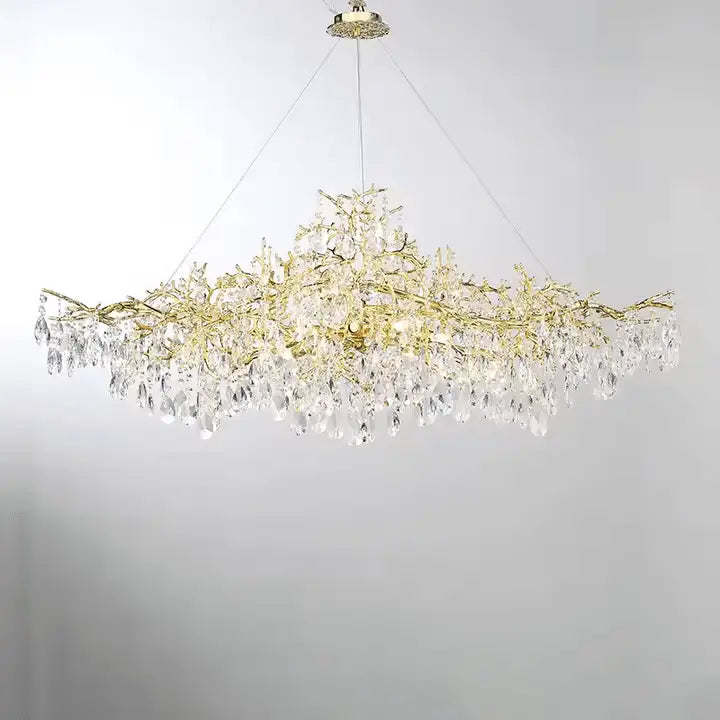Choosing the right chandelier for your dining room can be a game-changer. It's not just about lighting up the space; it's about adding a touch of elegance and style that reflects your taste. Traditional chandeliers are a popular choice for those who appreciate timeless beauty and classic designs. They bring a sense of warmth and charm that modern styles sometimes lack. Whether you're renovating your dining area or just looking to add a bit of flair, a traditional chandelier might just be what you need to elevate the ambiance.
Key Takeaways
- Traditional chandeliers add a timeless elegance to any dining room.
- Choosing the right size is crucial to ensure balance and harmony in the space.
- Materials like crystal and wrought iron are popular in traditional designs.
- Proper placement and height adjustment can enhance the chandelier's impact.
- Mixing traditional chandeliers with modern decor can create a unique look.
Exploring Traditional Dining Room Chandeliers

Understanding the Appeal of Traditional Styles
Traditional chandeliers have a way of transforming a room, adding a touch of class and sophistication that few other fixtures can match. Their timeless design speaks to the elegance of bygone eras, yet they remain relevant in today's decor. These chandeliers often feature intricate details, such as ornate metalwork or crystal embellishments, which create a focal point in any dining space. They're not just about lighting; they're about making a statement, a bold declaration of style and taste.
Key Features of Traditional Chandeliers
When you think of traditional chandeliers, certain features come to mind. These often include:
- Multiple Arms: Traditional chandeliers usually have several arms extending from the center, each holding a light, reminiscent of candles.
- Ornate Details: Look for intricate designs, including scrollwork and embellishments, that reflect historical influences.
- Crystal Accents: Many traditional chandeliers incorporate crystals or glass beads, adding a sparkling effect when lit.
- Metal Finishes: Common finishes include brass, bronze, and polished nickel, each lending a unique touch to the fixture.
Popular Materials Used in Traditional Designs
Traditional chandeliers are crafted from a variety of materials, each contributing to their distinctive look. Common materials include:
- Metal: Often used for the frame and arms, metals like brass and bronze offer durability and elegance.
- Crystal: Adds a luxurious sparkle, often used in droplets or beads that hang from the chandelier.
- Glass: Sometimes used in shades or decorative elements, enhancing the light's diffusion.
Traditional chandeliers serve as the crown jewel of dining rooms, blending functionality with artistry. Their enduring charm ensures they remain a favorite choice for those looking to add a touch of luxury and nostalgia to their homes.
For those interested in stylish chandeliers, these fixtures can truly enhance your decor, making a bold statement in spaces like lounges or dining areas.
Choosing the Perfect Traditional Chandelier for Your Dining Room
Factors to Consider When Selecting a Chandelier
Picking the right chandelier isn't just about lighting up your dining room—it's about making a statement that reflects your style. Consider these key factors to ensure your chandelier is the perfect fit:
- Size Matters: Measure your dining room and table to determine the ideal chandelier size. A fixture that's too large can overwhelm, while one too small might get lost in the space.
- Height and Hanging: The chandelier should hang about 30 to 36 inches above the table to provide optimal light and visual appeal.
- Style and Finish: Choose a chandelier that complements your existing decor. Whether it's a classic crystal chandelier or a rustic farmhouse style, the finish—like brass or bronze—can add timeless elegance.
Matching Your Chandelier to Your Dining Room Decor
Aligning your chandelier with your dining room's decor enhances the room's overall aesthetic. Consider the color palette and materials in the room. A chandelier with crystal accents might pair well with more formal settings, while metal or wood designs could suit a casual or rustic space. Think about the shapes and lines of your furniture and how the chandelier can complement these elements.
Sizing and Placement Tips for Optimal Impact
Proper sizing and placement of your chandelier can dramatically affect your dining room's ambiance. Here are some tips:
- Room Size: For a room up to 10x10 feet, a chandelier 17-20 inches in diameter is ideal. For larger rooms, increase the diameter by 2-3 inches for every additional foot of room space.
- Table Size: The chandelier should be about half to two-thirds the width of the dining table.
- Placement: Center the chandelier over the dining table for balanced lighting and aesthetic appeal.
Remember, the chandelier is not just a light source but a central piece of decor that can transform your dining area into a space of elegance and charm.
Top Traditional Chandelier Styles for Timeless Elegance
Classic Crystal Chandeliers: A Staple of Elegance
Classic crystal chandeliers are the epitome of timeless beauty. Their intricate crystal arrangements catch the light beautifully, creating a dazzling display that transforms any dining room into a sophisticated space. These chandeliers come in various designs, from simple cascades to elaborate multi-tiered models, making them versatile enough to fit any decor style. When choosing a classic crystal chandelier, consider the size of your dining room. A larger space can accommodate a more elaborate fixture, while a smaller dining area might benefit from a simpler design. Also, think about the existing decor—these chandeliers should complement your style, be it vintage, modern, or somewhere in between.
Vintage-Inspired Designs for a Nostalgic Touch
Vintage-inspired chandeliers bring a sense of nostalgia and charm to your dining room. These fixtures often feature ornate designs reminiscent of past eras, such as the Victorian or Art Deco periods. With elements like antique brass finishes and candle-style bulbs, they add a warm, inviting glow to your space. When selecting a vintage-inspired chandelier, look for details like intricate metalwork or glass shades that echo historical styles. These chandeliers not only light up your room but also serve as conversation starters, adding character and history to your home.
Farmhouse Style Chandeliers for Rustic Charm
For those looking to add character and warmth to their dining spaces, a farmhouse style chandelier is an excellent choice. These chandeliers are known for their rustic charm and often feature materials like wood and wrought iron. They bring a cozy, inviting atmosphere to your dining room, making them perfect for family gatherings and casual dinners. Farmhouse chandeliers come in various shapes and sizes, from wagon wheel designs to lantern-style fixtures, allowing you to choose one that best fits your space. Whether your decor is traditional or modern, a farmhouse chandelier can seamlessly blend in, adding a touch of personality to your home.
Enhancing Your Dining Room with Traditional Chandeliers
Creating Ambiance with Lighting
A traditional chandelier doesn't just light up a room; it sets the mood. Imagine sitting down for a meal under the gentle glow of a chandelier that casts intricate patterns on the walls. This kind of lighting can transform your dining room into a warm and inviting space, perfect for family dinners or entertaining guests. You can even adjust the light intensity with dimmer switches to suit different occasions, whether it's a lively dinner party or a cozy family meal.
Combining Chandeliers with Other Light Fixtures
Mixing and matching lighting can add depth and interest to your dining area. Consider pairing your chandelier with wall sconces or table lamps to create layers of light. This not only highlights your chandelier but also ensures that every corner of your dining room is well-lit and inviting. Think of it as creating a lighting symphony where each fixture plays its part to perfection.
Maintenance Tips for Long-Lasting Beauty
Keeping your chandelier looking its best requires a bit of care. Regular dusting can prevent dullness, and a gentle cleaning with a microfiber cloth will keep the crystals sparkling. For metal parts, a mild soap solution works wonders. Remember, checking the wiring and light bulbs periodically ensures everything stays in perfect working order. A well-maintained chandelier will continue to be the essence of traditional dining room lighting, adding elegance and charm for years to come.
The Art of Installing Traditional Dining Room Chandeliers
Professional Installation vs. DIY: What to Consider
When it comes to installing a traditional dining room chandelier, you have two main options: hiring a professional or doing it yourself. Professional installation ensures safety and precision, especially when dealing with electrical wiring and heavy fixtures. A skilled electrician can guarantee that everything is up to code and securely mounted. However, if you're handy and enjoy a challenge, a DIY approach can be rewarding. Just make sure you follow all safety guidelines and have the necessary tools on hand.
Ensuring Safety and Stability in Your Installation
Safety should be your top priority when installing a chandelier. Start by turning off the power to the room at the circuit breaker to avoid any electrical hazards. Use a sturdy ladder and have a friend assist you to hold the fixture steady. It's crucial to ensure that the chandelier is securely fastened to a ceiling joist or a suitable mounting bracket. Double-check all connections and tighten screws to prevent any wobbling or potential accidents.
Adjusting Height and Position for Best Results
The positioning of your chandelier can dramatically affect the ambiance of your dining room. Ideally, the bottom of the fixture should hang 30 to 36 inches above the dining table to provide adequate lighting without obstructing views. This height allows the chandelier to illuminate the table evenly, enhancing both aesthetics and functionality. Adjust the chain or rod length to achieve the desired height, and ensure that the fixture is centered over the table for a balanced look.
Installing a traditional chandelier is not just about aesthetics; it's about creating a safe and inviting atmosphere for your dining space. Whether you choose to hire a professional or tackle the installation yourself, careful planning and attention to detail will ensure your chandelier becomes a stunning focal point in your home.
Incorporating Traditional Chandeliers into Modern Spaces
Blending Traditional and Contemporary Styles
Bringing a traditional chandelier into a modern space can be a delightful way to create contrast and interest. A vintage chandelier can add unexpected elegance to contemporary settings, offering a timeless balance between old and new. When selecting a chandelier, consider finishes like brass or polished nickel to seamlessly integrate with modern decor.
- Choose a chandelier with clean lines to complement sleek modern furniture.
- Opt for neutral tones or metallic finishes to blend effortlessly with contemporary color schemes.
- Consider chandeliers that incorporate modern elements like LED lighting for energy efficiency.
Using Chandeliers as Focal Points
A traditional chandelier can serve as a stunning focal point in any modern room. Its grandeur can draw the eye and anchor the space. When positioning your chandelier:
- Place it centrally over the dining table or living area to maximize impact.
- Ensure it hangs at the right height to avoid obstructing views or conversations.
- Use dimmable bulbs to adjust the ambiance and highlight the chandelier's features.
A well-placed chandelier doesn't just light up a room; it transforms it into a space of sophistication and warmth.
Adapting Traditional Designs for Modern Aesthetics
Incorporating traditional chandeliers into modern spaces involves a bit of adaptation. Look for designs that have been updated with contemporary touches. For instance, a classic crystal chandelier with a minimalist frame can offer a chic, modern twist.
- Seek out chandeliers with simplified silhouettes to avoid overwhelming modern decor.
- Pair chandeliers with modern furniture and decor for a cohesive look.
- Consider incorporating a vintage chandelier into modern decor to add character and depth to your space.
By thoughtfully blending traditional and modern elements, you can create a dining area that's both stylish and inviting, embodying the best of both worlds.
Accessorizing Your Dining Room with Traditional Chandeliers

Pairing Chandeliers with Dining Room Furniture
When it comes to pairing chandeliers with your dining room furniture, balance is key. Start by considering the style and finish of your furniture. If you have a rustic wooden dining table, a traditional chandelier with wrought iron elements might complement it beautifully. On the other hand, for a sleek, modern table, a crystal chandelier can add a touch of elegance and contrast.
Choosing Complementary Decor Elements
To enhance the beauty of your chandelier, select decor elements that complement its style. Think about incorporating mirrors on the walls to reflect the light and create a sense of space. Candlesticks or vases in similar finishes to your chandelier can tie the room together beautifully.
Using Color and Texture to Enhance Your Chandelier
Color and texture play a crucial role in making your chandelier stand out. Consider the room's color palette and choose a chandelier finish that harmonizes with it. If your dining room features warm hues, a chandelier in brass or bronze might be the perfect match. For a more contemporary look, polished nickel or chrome finishes work well. Additionally, layering textures, such as using velvet curtains or a plush rug, can add depth and interest to the room.
A well-chosen chandelier can transform your dining room into a space of timeless elegance, creating a welcoming atmosphere for family meals and gatherings.
Conclusion
Choosing the right chandelier for your dining room is more than just picking a light fixture; it's about setting the mood and style of your space. Whether you lean towards the timeless elegance of a crystal chandelier or the modern flair of a geometric design, there's a perfect piece out there for everyone. Remember, it's not just about the look—consider the size, height, and the overall vibe you want to create. A well-chosen chandelier can transform your dining area into a warm, inviting place where memories are made. So, take your time, explore your options, and let your dining room shine with the perfect chandelier.
Frequently Asked Questions
Why should I pick a traditional chandelier for my dining room?
Traditional chandeliers add a timeless and elegant touch to your dining room, creating a warm and inviting atmosphere.
What materials are commonly used in traditional chandeliers?
Traditional chandeliers often use materials like brass, bronze, and crystal to give a classic and luxurious look.
How do I choose the right size chandelier for my dining room?
To pick the right size, measure your dining table and room. The chandelier should be about one-third the width of your table.
Can I mix a traditional chandelier with modern decor?
Yes, blending traditional chandeliers with modern decor can create an interesting and stylish contrast.
How high should I hang my chandelier above the dining table?
The chandelier should hang about 30 to 36 inches above the dining table to provide good lighting without being too low.
Do I need a professional to install my chandelier?
It's often best to hire a professional to ensure safe and proper installation, especially for heavier chandeliers.

